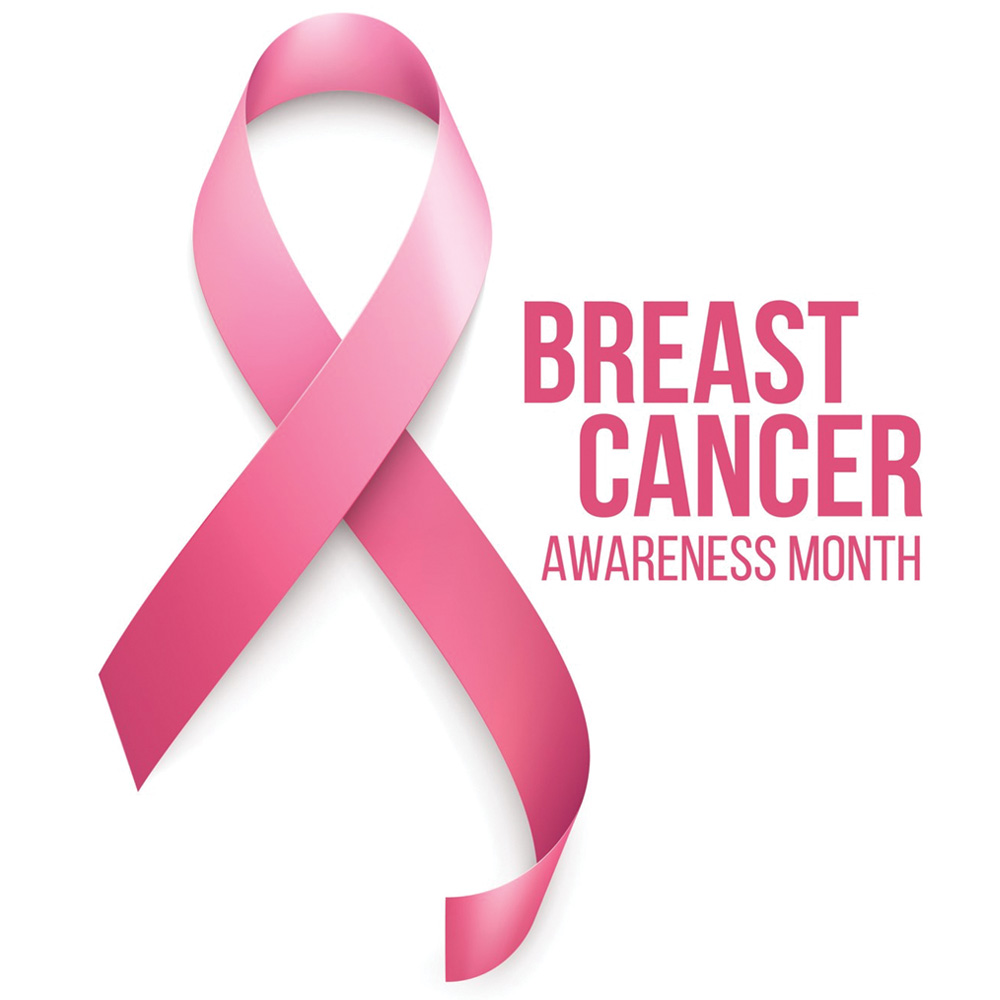By Ashley Ferraro
October signals the beginning of fall, with pumpkin spice everything, ghouls and goblins, and hopefully a shift to milder weather. However, it’s also Breast Cancer Awareness Month, a time to remember, support, and empower those whose lives have been touched by breast cancer. Even those fortunate enough to have avoided this devastating disease can benefit greatly from raising awareness, and here’s why.
According to the American Cancer Society, an alarming 1 in 8 women will receive a breast cancer diagnosis in her lifetime. This statistic places breast cancer as the second most common cancer among women in the U.S. Many people around us, whether in our family or community, struggle with the realities of this disease every day.
Certain risk factors can increase an individual’s vulnerability to breast cancer, such as gender, age, race, family history, reproductive history, and genetic mutations, according to the National Breast Cancer Foundation. Additional avoidable risk factors include a sedentary lifestyle, poor dietary choices, obesity, and alcohol consumption.
However, approximately 60-70% of breast cancer cases have no clear connection to these risk factors. But even those who don’t identify with these factors should remain vigilant, which can be done at home through early detection. Monthly self-examinations are a simple yet effective way to detect any unusual changes in the breast. If you notice anything even slightly out of the ordinary, don’t hesitate to consult your healthcare provider.
Even if you feel healthy and haven’t noticed any symptoms, regular screenings should be an integral part of your healthcare routine. Mammograms, for instance, can detect breast lumps before they are palpable. According to the National Breast Cancer Foundation, women aged 40 and above should have mammograms every 1-2 years. For those under 40 with risk factors, it’s crucial to discuss the necessity and frequency of mammograms with a healthcare professional.
Even then, an abnormal mammogram result isn’t a cause for panic; it doesn’t automatically signify breast cancer. Often, breast lumps are benign, but additional testing is essential for a definitive diagnosis. But even in seemingly worst-case scenarios, there’s plenty of hope. With recent advances in technology, screening, and early detection are making new strides in saving lives.
The importance of early detection cannot be stressed enough. According to the American Cancer Society, the 5-year breast cancer survival rate is 99% when the disease is detected early and in a localized stage. Listening to your body and working with your doctors can save your life.
Breast Cancer Awareness Month started as a weeklong event in 1985 and has grown to a month-long initiative observed by tens of millions of Americans every year. Thanks to this nationwide push for the past several decades, the breast cancer mortality rate among women had declined 43% since its peak in 1989. Doing your part this month to spread awareness will be the first step toward continuing to make impactful change.
To donate to awareness and research efforts, visit komen.org, bcrf.org, nationalbreastcancer.org or local organizations such as www.notmydaughter.org

